TV refresh rates: How to see through the TV industry’s biggest lie
This is the biggest lie told to TV shoppers — and how to run into through it
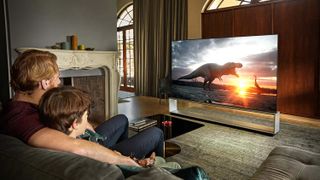
TV manufacturers dearest jargon. Whether it's adopting new technical features like HDR or adaptive brightness, or but slapping a branded proper noun onto a standard characteristic, trying to parse what'south what on a given Tv tin be a pain, even for the best TVs.
But there's one expanse where details aren't just cloudy, they're sometimes downright dishonest, and that's refresh rates. This simple specification should be an easily understood number, just for several reasons it's not. It's not even information that's easily found, in many cases.
Here'due south the low down on what refresh rates are and why they're important, why Tv makers bend the truth, and how yous can spot the lie and get the straight info to brand a more informed TV purchase.
Refresh rates explained
Expressed in Hertz (Hz), a TV's actual refresh charge per unit tells you how many times per 2nd a new frame or epitome can exist put up on screen. The human eye starts stitching these images together to create the illusion of smooth motility at rates every bit low as 24 frames per second, the frame rate traditionally used in motion picture and movies.
Most TVs today offering 1 of two refresh rates: 60 Hz, which refreshes the display image threescore times per second, and 120 Hz, which refreshes 120 times per 2nd. That 120Hz is really the better of the two, since fast moving objects, like a slap shot in hockey, or a laissez passer thrown in football, may expect a little blurry or choppy, depending upon how the Telly handles movement smoothing.
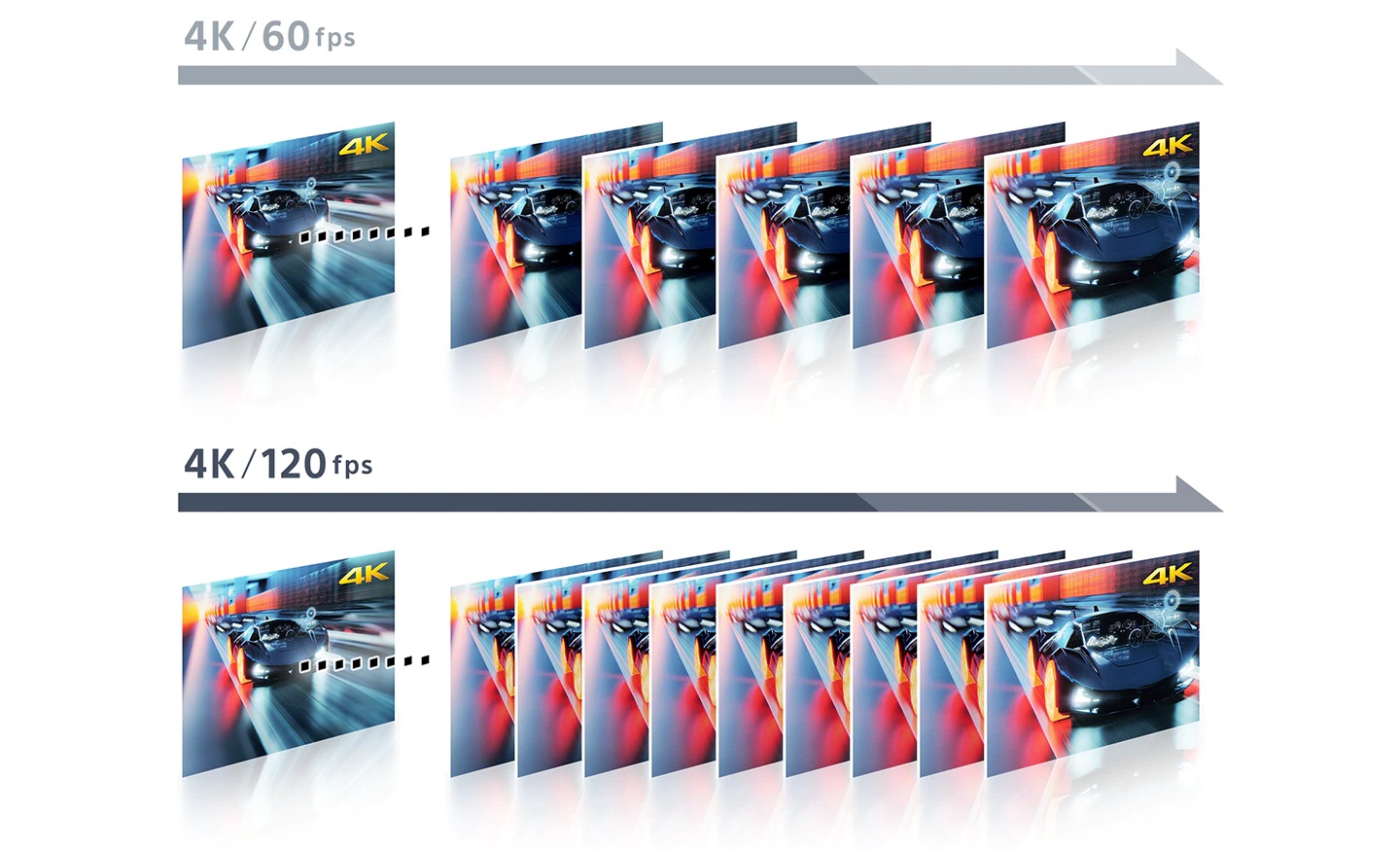
But there's a departure betwixt the display's refresh rate (measured in Hz) and the source content frame rate (measured in frames per 2d or fps). When the refresh rate and the signal rate match, it's perfect, and you'll be seeing exactly what the creator intended. If at that place's a mismatch, however, the Idiot box volition need to apply some video processing techniques to display content properly.
For a very long fourth dimension, 30fps was the standard, and it'due south still a common refresh rate for broadcast TV and older media like DVD and 1080p Blu-ray. Only newer media oftentimes takes advantage of the newer capabilities to offer higher frame rates better suited to your TV. Gaming in item has adopted higher frame rates, with the latest consoles offering 60Hz and 120Hz gameplay.
The higher frame rate is likewise 1 of the few Tv specs that can easily communicate that one TV is amend than some other, at least for this one feature. It'southward piece of cake to look at the frame rate and understand that 60 is adept, 120 is better, and leave it at that.
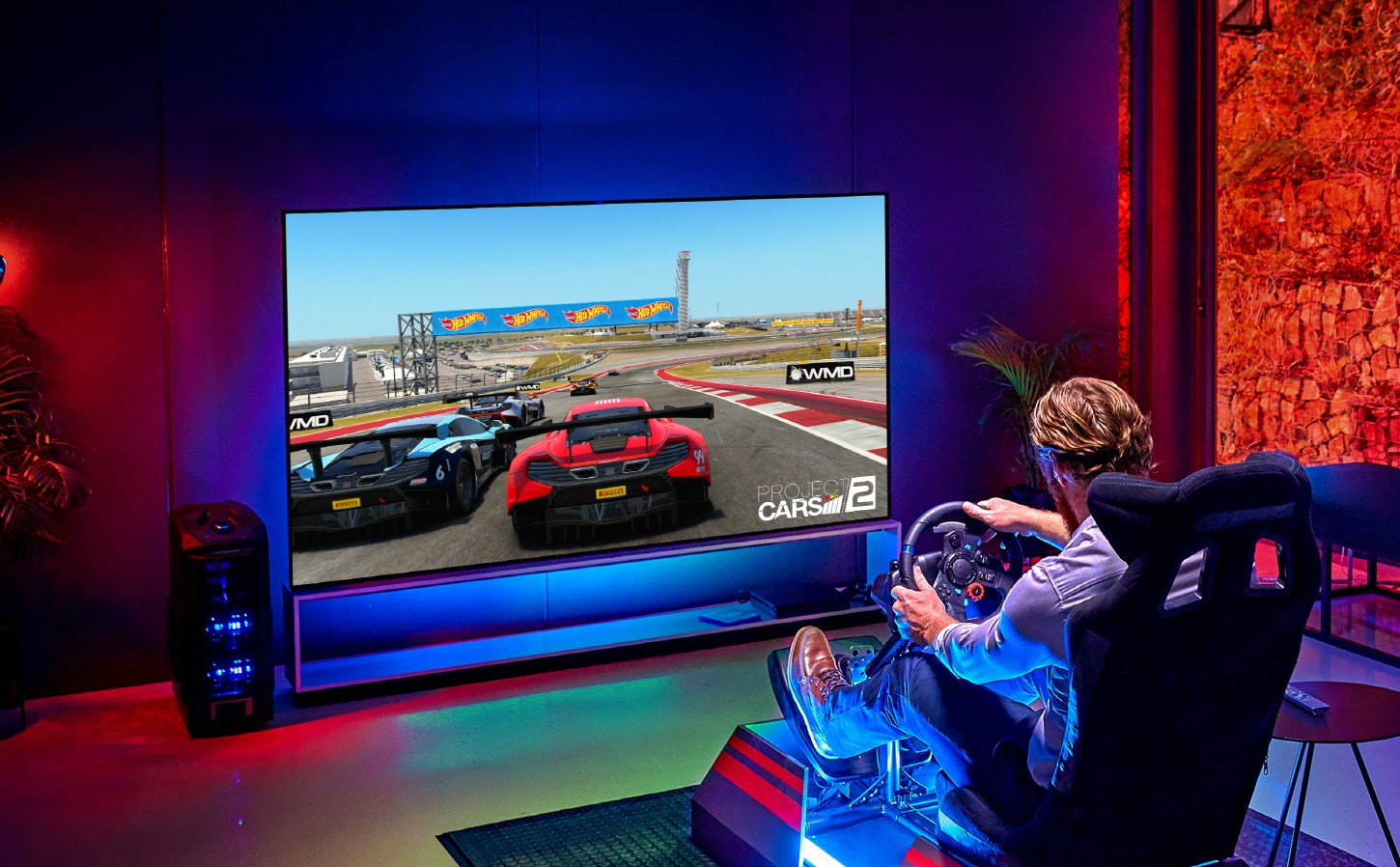
Telly refresh rates: How the truth gets blurry
That's groovy if you're selling 120Hz TVs, but less then if you desire to compete confronting those models with a 60Hz display. However, with the processing the TVs already have to practise to lucifer source frame rates to brandish refresh rates, TV manufacturers saw an opportunity to dirty the waters.
There are some very sophisticated approaches to this, but here'due south the unproblematic version: TV makers accept figured out that they tin mimic higher frame rates by adding an extra flicker. By pulsing the backlight on and off in betwixt those lx refreshes, the alternating pattern of new frames and blinked light provides the illusion of a higher frame rate… sort of.
As a result, yous'll often see Telly specs list something called the "constructive" refresh rate, which is double what the Telly'due south panel tin actually do. Some brands will use dissimilar terminology, merely the underlying reality is the same – in that location's a difference betwixt the actual refresh rate of the Television set brandish panel and what you're told in the product specs and marketing materials.
What that really means is that manufacturers can employ that calorie-free pulsing trick to claim a college number than the Telly really supports. If you lot play 120Hz content on a 60Hz display, just crash-land the constructive rate up by flickering the backlight, information technology won't magically display all 120 frames of content each second. Instead information technology will display 60, dropping half of the frames to lucifer the actual refresh rate that the display tin can handle.
TVs will also use heavy handed motion smoothing techniques to give the illusion of smoothness that a higher frame charge per unit would impart. It is also sometimes called the Soap Opera Effect, because it makes everything look a fiddling blurry or smeared. (Learn how to turn it off in our guide to the five Television receiver settings you should alter at present.)
How to spot the refresh rate prevarication
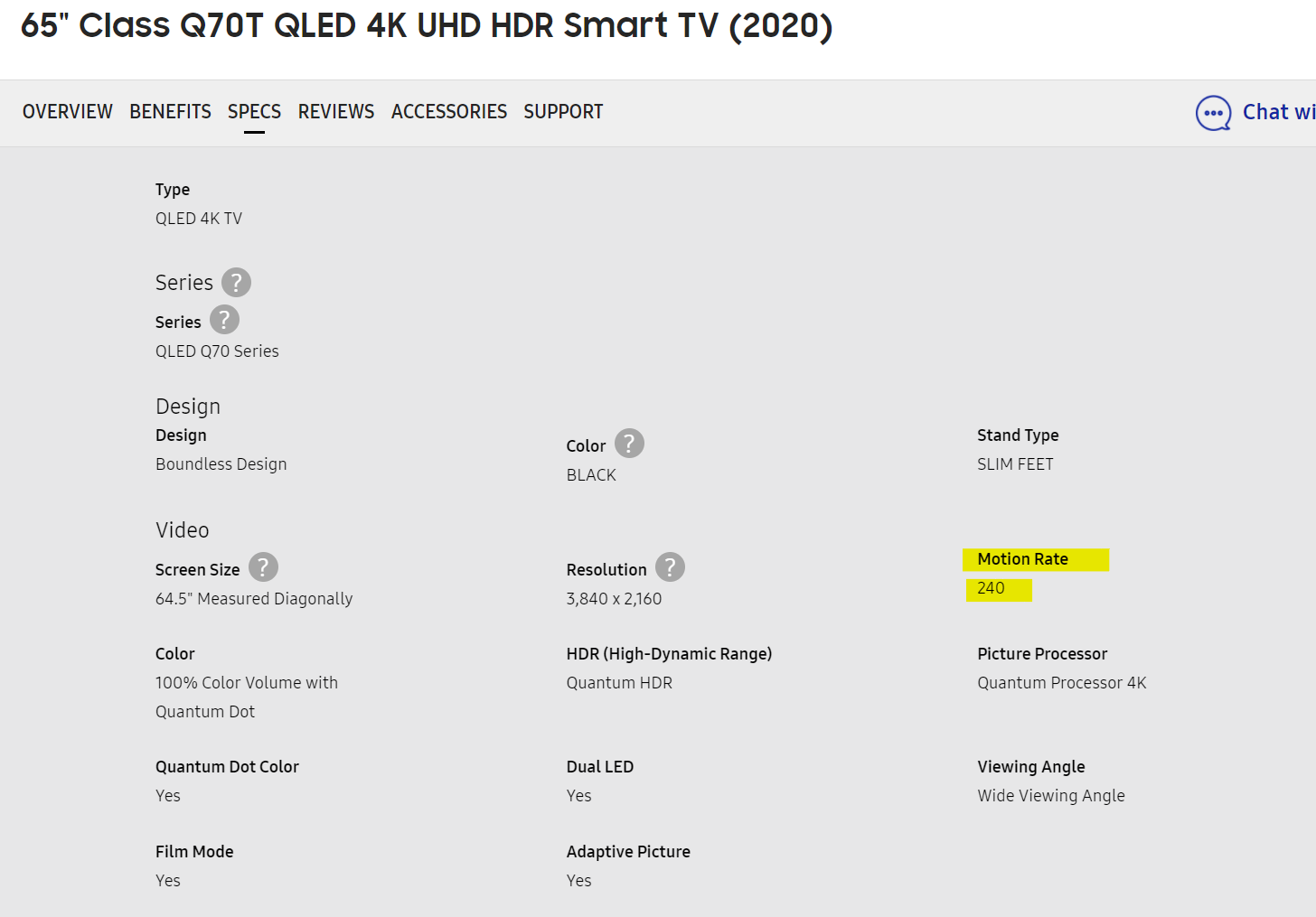
Every bit with seemingly every other feature on mod TVs, dissimilar brands use different terms for this artificially boosted frame charge per unit claim.
The first red flag to watch for is "constructive charge per unit" when discussing frame rates. As a dominion, the effective rate volition exist double what the panel can physically brandish, and so the actual refresh charge per unit is half that number: an effective rate of 240Hz is actually 120Hz, and constructive rate of 120Hz is really 60Hz, and so on.
Sometimes information technology's even college, as companies will double down on the trickery to merits a 240Hz refresh rate on a 60Hz panel.
Here are what the different TV makers call their own "effective refresh rate" technologies.
- LG - TruMotion
- Hisense - Motion Charge per unit
- Samsung - Clear Move Charge per unit
- Sony - Motion Menstruation XR, X-Motion Clarity
- TCL - Clear Motion Index (CMI)
- Vizio - Articulate Activeness
The piece of cake way to spot the real number is to look for the words "native" or "bodily". These terms have legal definitions, and fudging these numbers tin can land TV makers in legal trouble.
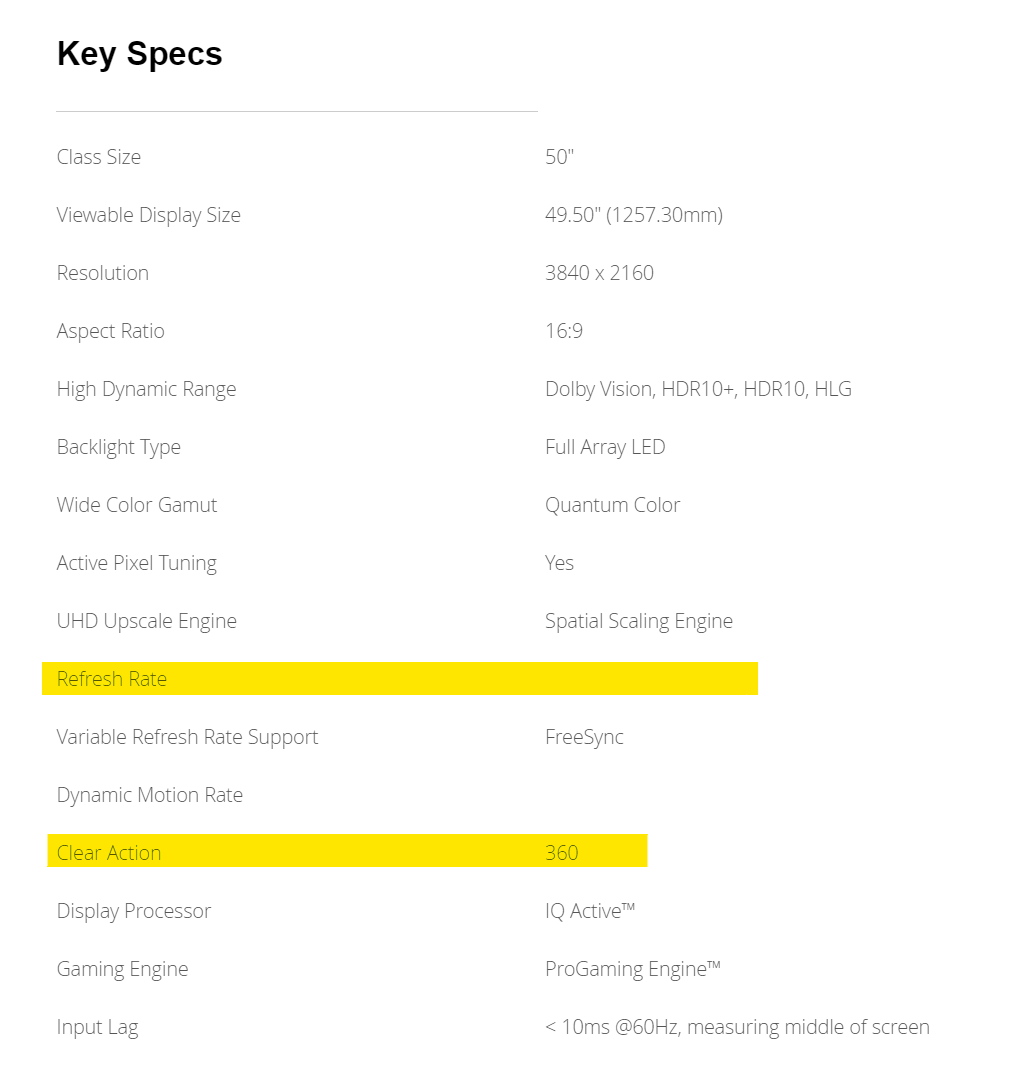
Unfortunately, that particular spec may not e'er be easy to discover. In improver to hiding backside the terms listed above, many times a Tv set's refresh won't fifty-fifty be listed on the manufacturer'southward product page. Some will omit that specification birthday, while others will simply leave it blank.
The good news is that we're watching out for you. We include the existent refresh charge per unit in the specs of every TV we review – whether it's dug upwards from less accessible fabric, confirmed by a customer service tech or PR rep, or tested ourselves – and so that you accept the correct data for any Goggle box nosotros recommend.
Source: https://www.tomsguide.com/opinion/tv-refresh-rates-how-to-see-through-the-tv-industrys-biggest-lie
Posted by: conklingreirrom.blogspot.com


0 Response to "TV refresh rates: How to see through the TV industry’s biggest lie"
Post a Comment